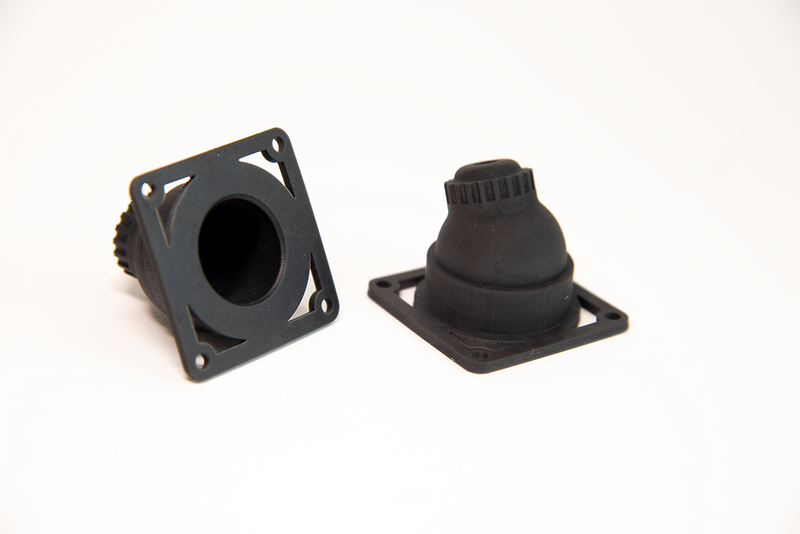Since the announcement of their collaboration in February 2019, Henkel and Origin have been collaborating to develop new materials by optimizing print processes that extend the current boundaries of additive manufacturing. As a result of this partnership Henkel has developed an entirely new 3D printable photopolymer material with fire, smoke and toxicity resistance properties for use with Origin One printers.
The new photoreactive material that will be presented during the Formnext in Frankfurt meets the fire, smoke and toxicity safety standard UL’s 94V-0 and the industry leading aerospace 12 and 60 second vertical burn tests. The innovative product sets a new threshold for fire-, smoke- and toxicity-resistant 3D printing materials across many industries, including aerospace, automotive and transportation.
“The development of our new fire-resistant material is a real breakthrough innovation exceeding the properties of all currently available materials for DLP systems on the market,” says Philipp Loosen, Head of 3D Printing at Henkel. “Our open materials platform was specifically designed to enable a wide range of our resin portfolio for use in additive mass production. Together with Origin we have proven our capabilities to unlock the transformative power of 3D printing towards industrial manufacturing.”
Henkel aims to eliminate some of the most severe limitations in the additive manufacturing space. By combining software, data and chemistry, the company is rapidly introducing new production quality materials for the 3D printing market. With the launch of its open materials platform, Henkel is taking a more inclusive approach, working directly with manufacturers of 3D printers and system providers to unlock new applications.
Henkel’s new fire-, smoke- and toxicity-resistant material demonstrates the power of open collaborations as the development was facilitated by the unique capabilities of the Origin One printer and Henkel’s capability of rapid innovation. Origin’s technology enables the printing of many different types of chemistries through world class hardware, environmental control and software tools to fine tune the print process. With its Programmable Photopolymerization (P³) technology, the company can precisely orchestrate light, temperature, and other conditions, automatically optimizing prints in real-time for the best possible results.
“Since its inception, we have been committed to an open materials approach,” says the Origin’s CEO, Chris Prucha. “We were able to specifically program the Origin One to meet the environmental conditions needed to cure the material in a way that activates Henkel’s innovative chemistry, creating 3D printed parts that set a new standard for fire resistance. It’s a perfect example of how open collaboration between technology providers and materials companies should work, and we’re excited about the opportunities it creates for our clients and their end users.”
“For a long time, materials have been a big limiting factor in additive manufacturing,” says Ken Kisner, Innovation Lead and Founder of Molecule Corp., which is part of Henkel since May. “We’re committed to solving that piece of the puzzle. Our scientists aren’t just contributing chemistry, they’re also leveraging the material science data that we generate to generate new technologies at a fast pace.”
www.henkel.com
